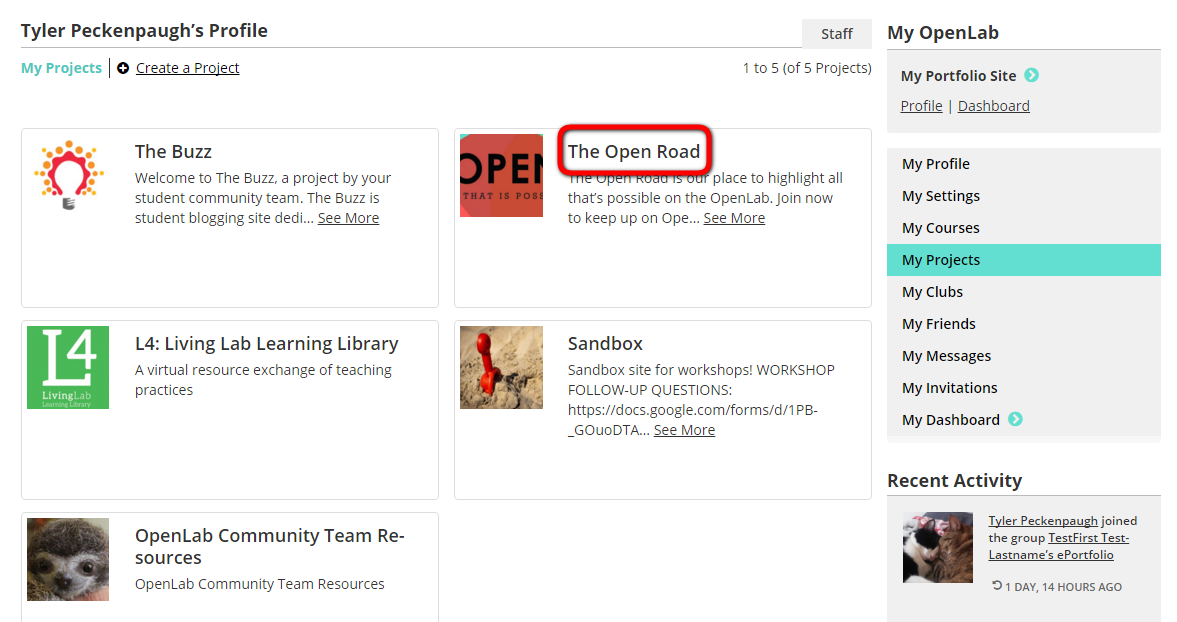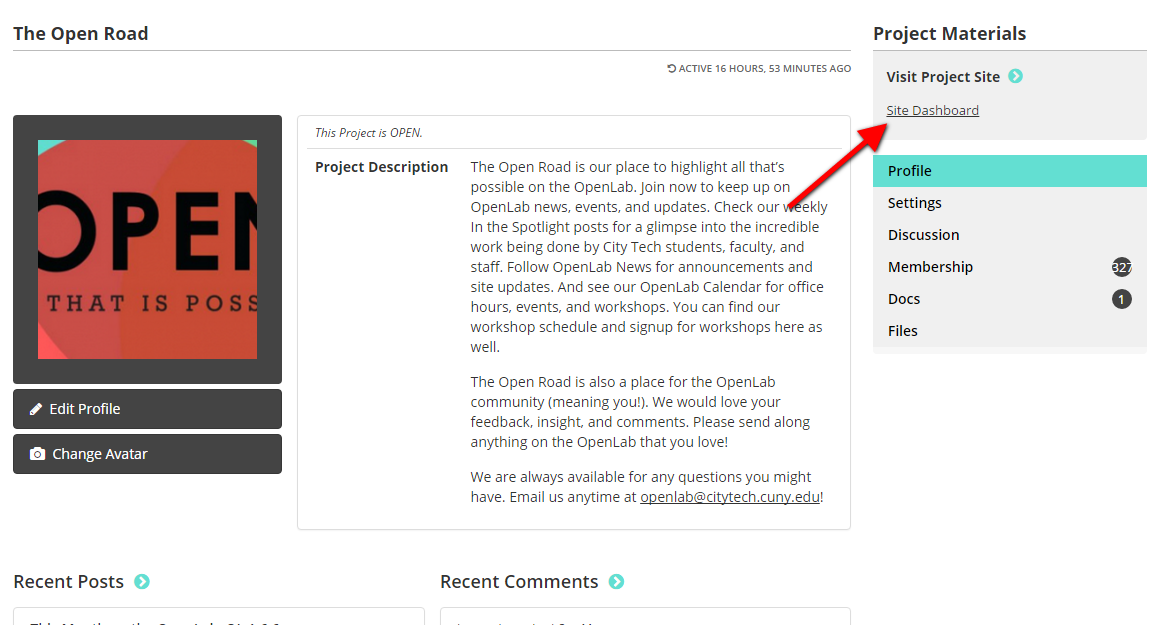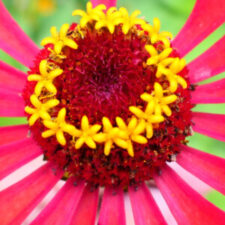What is the Site Dashboard?
1. When you type in the URL, or web address for your site, or if you navigate to your site from the OpenLab Profile, you are viewing the public side or “front-end” of your site. If you have kept your site public, anyone can see this.
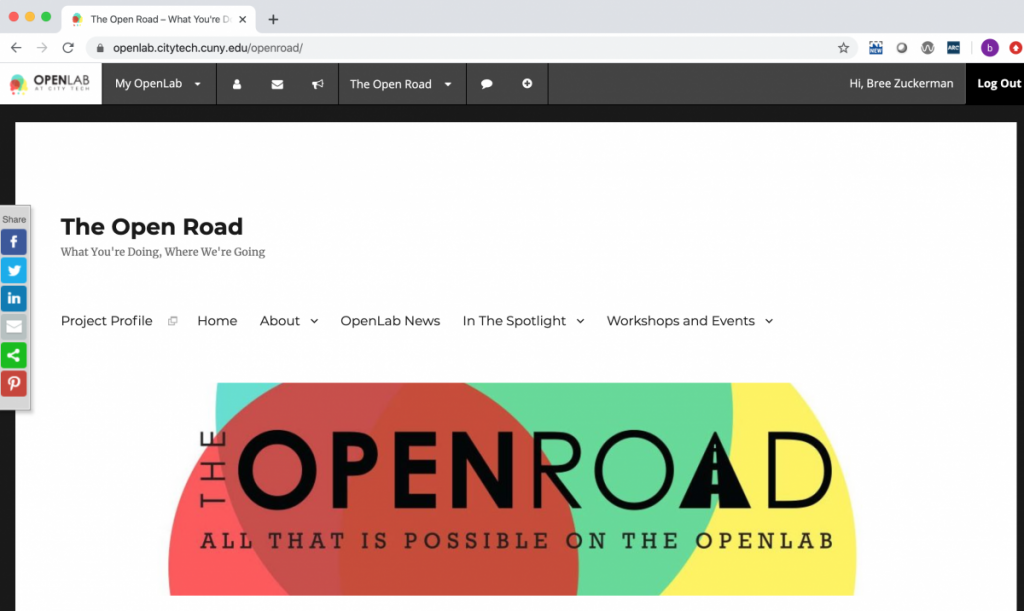
2. The private section of your site is called the “Dashboard.” It is the “back-end,” or administrative area. This section of your site is only available only to you (i.e., the site Administrator) and to those who you choose to share your site with.
3. You can access your site Dashboard from the course, project, or club profile page on which you have added a site. Login to the OpenLab, and click My OpenLab in the main menu. In the right-hand menu of My OpenLab, click on My Courses, My Projects, or My Clubs. Click the appropriate course, project, or club title to access its respective Profile page.
4. From the Course, Project or Club Profile page, click Dashboard in the right-hand menu.
5. You can also access your site Dashboard from the front-end of your site by going to the “Home” page of your site and in the toolbar at the very top of the page, you’ll see a link to the Dashboard in the dropdown menu under the title of your site.
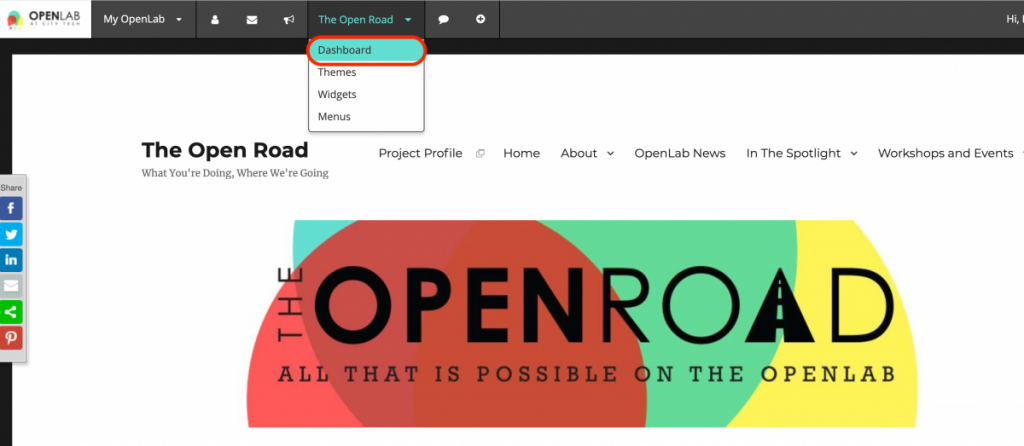
6. When you open the Dashboard screen, you should see a menu on the left-hand side of your screen. This is where you can create, manage, and edit the content of your site, as well as create, manage, and edit the functions on your site. Depending on your role, you will see different options in this menu. Only an administrator will see all of them.
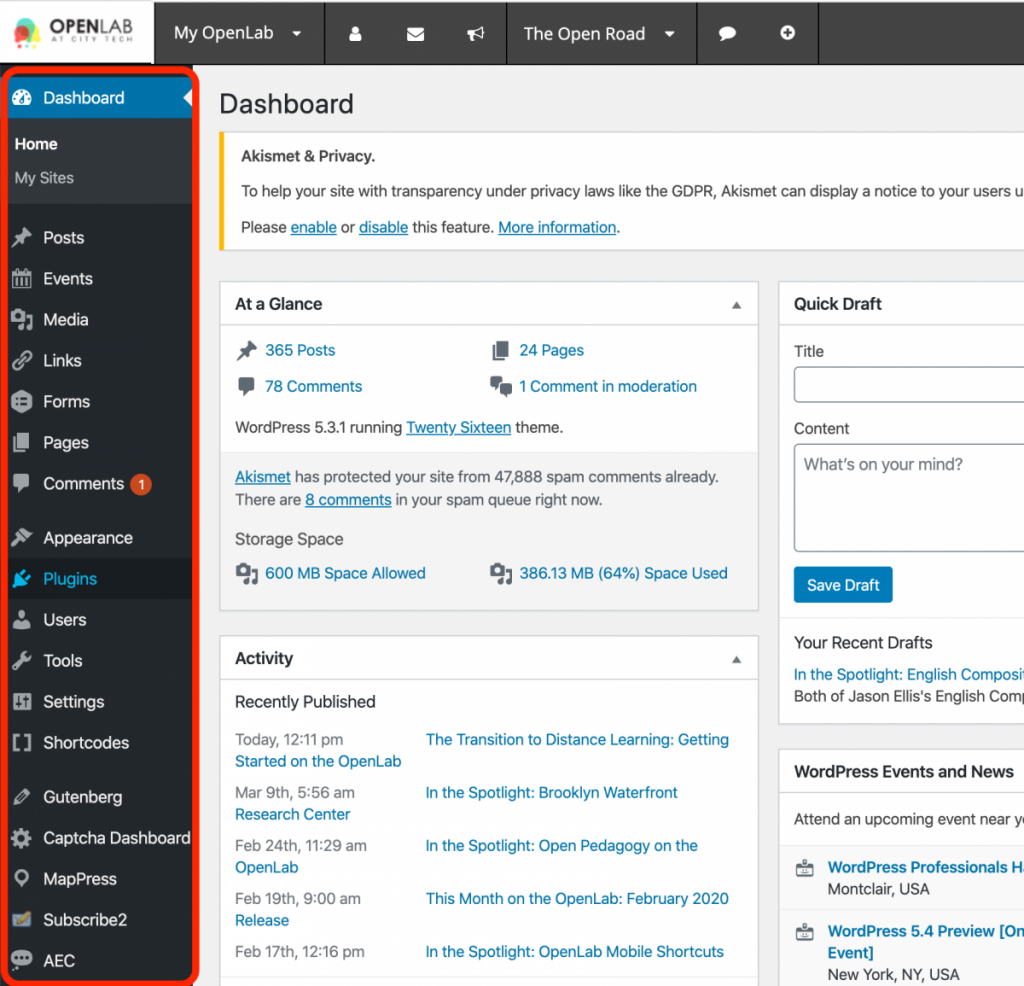
7. Depending on your role, you will see some or all of the following options for managing the content and functions of your site:
- Posts: Click Posts to see All Posts created on your site; click Add New to add additional posts to your site; click Categories and/or Tags to categorize and/or tag your posts.
- Media: Click Media to see your media library—where you can store media files (e.g., image files, video files) that you want to use for multiple posts—or to add new media files to a post, page, or to your media library.
- Links: Click Links to add and store links for your site. You can also categorize links by clicking Link Categories.
- Pages: Click Pages to see all of the pages created on your site or to add new pages to your site.
- Comments: Click Comments to manage and view all of the comments made on your site. You can approve comments, mark them as trash, or mark them as spam.
- Appearance: Click Appearance to manage and edit themes, widgets, and menus, as well as to customize your site’s header and background image.
- Plugins: Click Plugin to manage and edit the plugins on your site.
- Users: Click Users to view or edit all of the users on your site.
- Tools: Click Tools > Available Tools to utilize the Press This application. Press This converts the categories and tags on your site’s posts to tags (or vice versa). Click Tools > Import to import posts and/or comments from a non-Wordpress site, or you can click Tools > Export to export your site’s content (i.e., posts, pages, comments, custom fields, categories, and tags) as an XML file. Additionally, the option to delete your site also appears under the Tools menu, Tools > Delete Site.
- Settings: Click Settings to change your site’s title, the site administrator’s e-mail address, edit comment settings, font and page displays, image sizes, privacy settings, etc.
